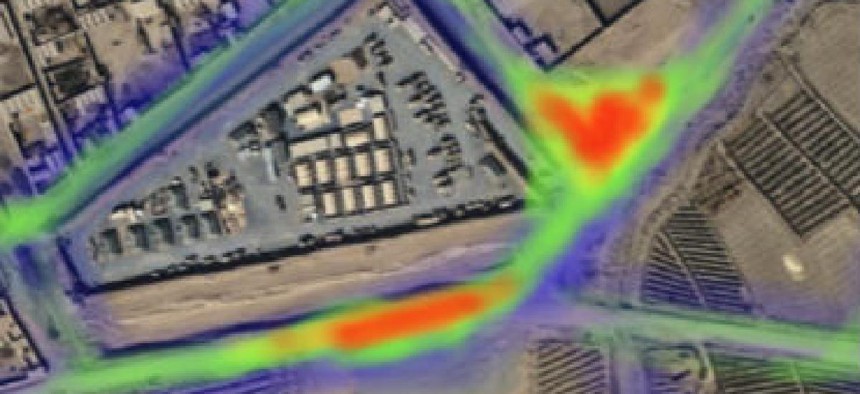DARPA's map apps transforming battlefield operations

A Defense research agency program provides digital imagery to troops on the ground and aims to build a library of apps that are simple to access and use.

The Defense research agency's new program provides digital imagery to troops on the ground and aims to build a library of apps that are simple to access and use.
For decades, the military depended on paper maps to navigate in the combat theater; often, those maps were outdated, cumbersome or otherwise inadequate. Even into the 1990s, overhead imagery and awareness of recent or manmade changes to terrain were relegated to the wish lists of many troops on the ground.
Now those wishes are coming true, propelled by the Defense Advanced Research Projects Agency, which is arming troops with customizable, high-resolution digital maps delivered to smart phones and tablets.
DARPA's Transformative Apps program provides digital imagery to dismounted troops through secured Android devices, but it also aims to build a library of secure military apps that are as simple to access and use as their commercial counterparts, even in the most austere and disconnected tactical environments.
What started with a single independent company in 2011 quickly has grown into a critical capability fielded to thousands of soldiers, according to DARPA officials.
"The types of apps soldiers really wanted initially focused on high-resolution map imagery in the palm of their hand," said Doran Michels, DARPA program manager, told reporters on a conference call Dec. 3. "At that time, before each mission they would print out [terrain] screen shots ... and assemble sets of different maps and different frames at different zoom levels, based on what they expected the mission to be. But if there was a change to the mission, or if things didn't go according to plan ... then they were completely without a map capability and were essentially flying blind."
The initial mapping requirement, once met, quickly grew into other needs, such as heat mapping crucial to establishing IED patterns and routing patrols around them. The capabilities troops need on the ground today continue to evolve, and the goal of DARPA's program is to be able to quickly meet those needs and get solutions into soldiers' hands.
"In 18 months we went from zero to 3,000 users, supporting the entire Army Afghan theater of operations," Michels said. All the while, "scaling wasn't just propagating our capability we established; we were improving in real time as we went, so it was growing as it was being made better."
The program augments other DARPA battlefield capabilities, such as the agency's Tactical Ground Reporting System, or TIGR. With TIGR already serving as a central database for information gathered on the ground, including through patrols, the apps and mobility component boost situational awareness.
"It's another way to push as many capabilities as we can down to the lowest level possible," said Maj. Tim Terese, who recently used the apps during a deployment to Afghanistan. "They say a picture is worth 1,000 words – whether that's imagery, maps or photos. But when you put it together, it means something."
NEXT STORY: Insurers Worry About Big Gaps in Obamacare Site





